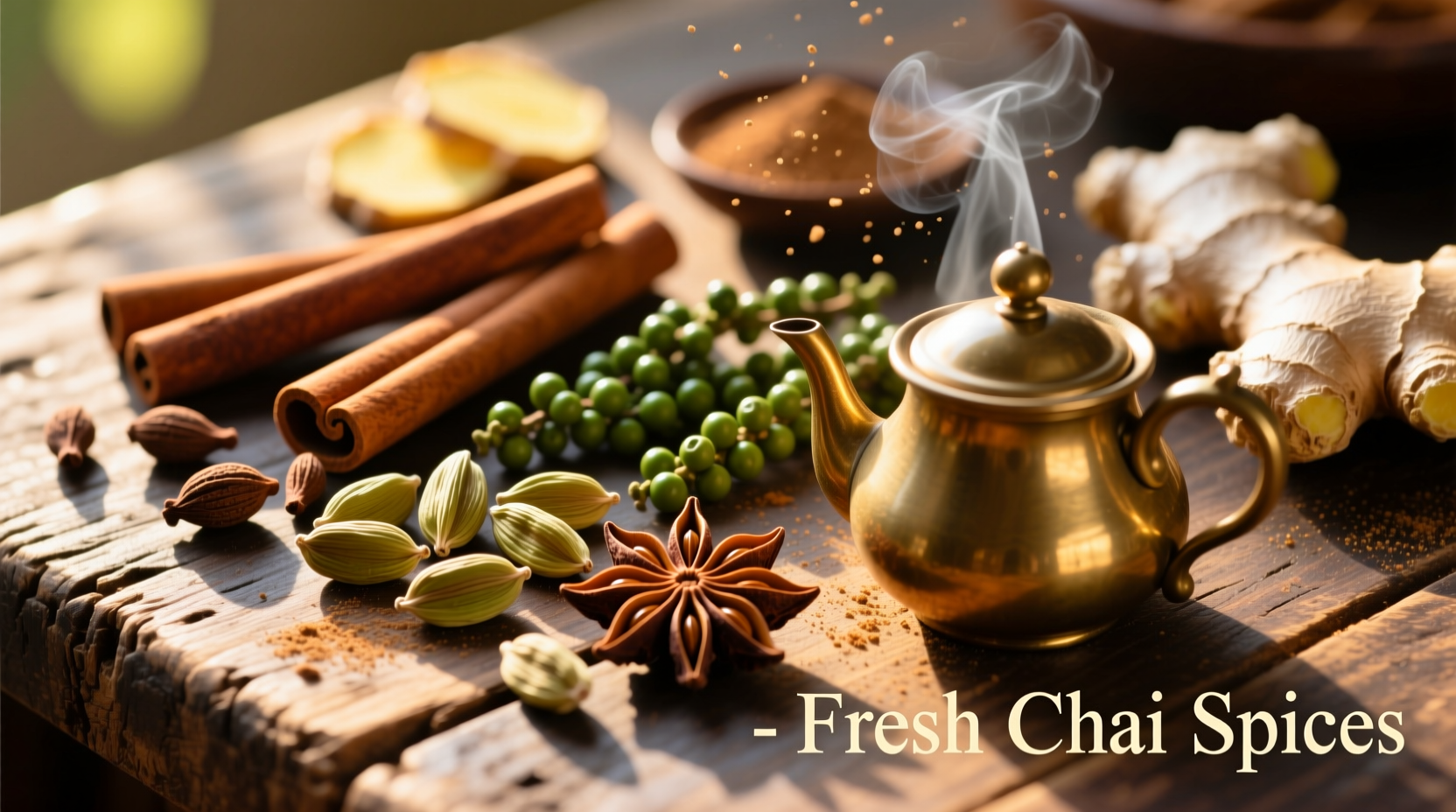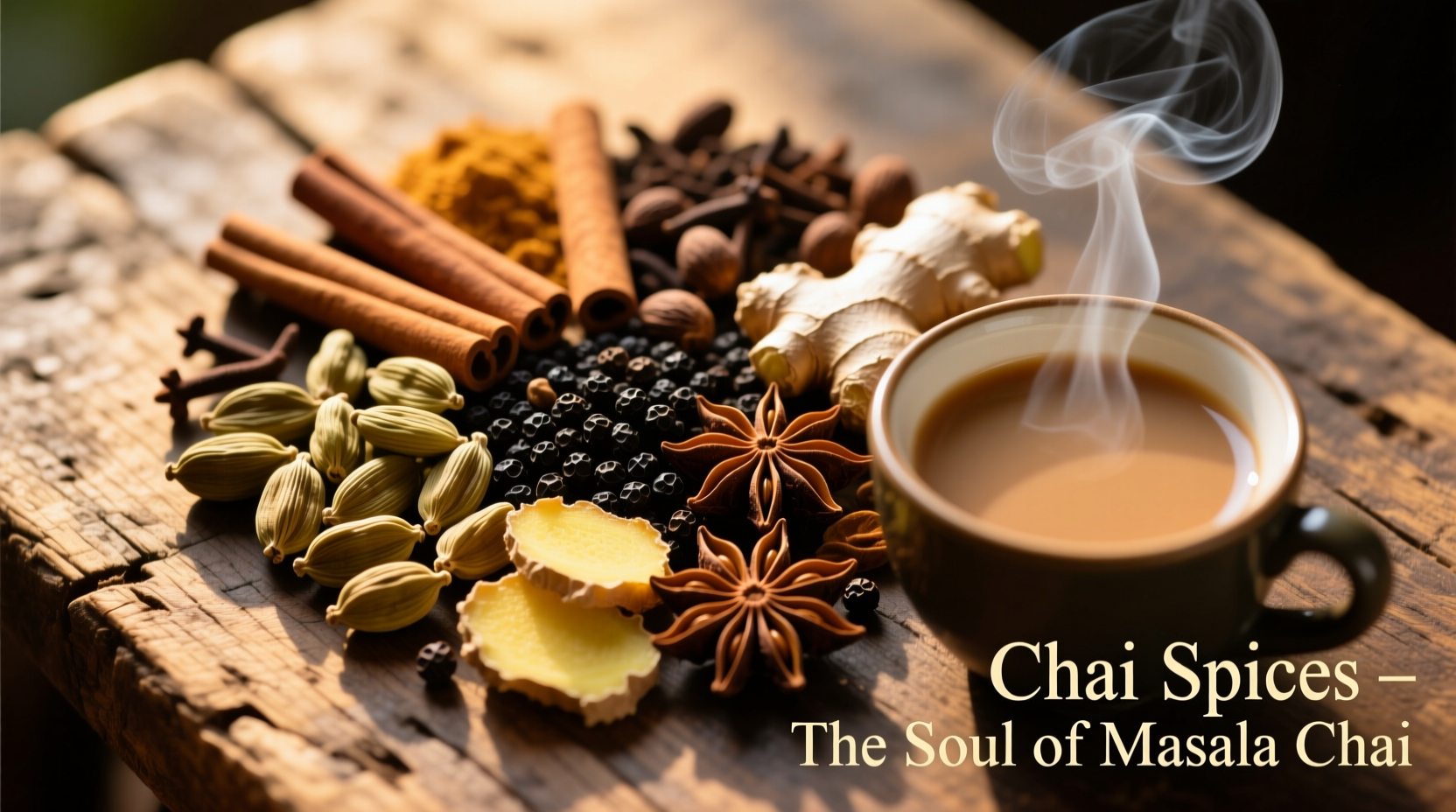When you ask what is chai spices, you're exploring one of the world's most enduring spice traditions. This aromatic blend forms the heart of masala chai, India's national beverage, but extends far beyond tea preparation into global culinary practices. Understanding chai spices means recognizing they're not a single ingredient but a carefully balanced symphony of warming spices with deep cultural roots.
The Essential Components of Authentic Chai Spices
Contrary to popular misconception, "chai" simply means "tea" in Hindi, so "chai tea" is redundant. The magic happens with the masala (spice blend) added to the tea. Authentic chai spices traditionally include five core ingredients:
- Cardamom (green): Provides floral, citrus notes - the signature flavor
- Cinnamon (Ceylon preferred): Adds warmth and sweetness
- Ginger (fresh or dried): Delivers spicy heat and digestive benefits
- Cloves: Contribute intense warmth and complexity
- Black pepper: Enhances bioavailability of other spices
Regional variations may incorporate star anise, nutmeg, or fennel, but the quintessential Indian chai spice blend maintains this foundational five-spice composition. The precise ratios vary by household and region, creating endless subtle variations on the theme.

Chai Spices vs. Commercial "Chai" Products
Many Western products labeled "chai spices" or "chai tea" contain additional ingredients that dilute authenticity. Understanding what chai spices really are requires distinguishing between traditional blends and modern adaptations:
| Authentic Chai Spices | Commercial "Chai" Products |
|---|---|
| No tea leaves included | Often pre-mixed with black tea |
| Whole spices preferred | Typically ground spices |
| Five core spices only | May include vanilla, sugar, artificial flavors |
| Freshly prepared for each batch | Pre-mixed, often stale by purchase |
Historical Journey of Chai Spices
The story of what chai spices are begins long before tea entered the equation. According to research from the Encyclopædia Britannica, spice blends similar to modern chai spices were used in Ayurvedic medicine for over 5,000 years. These warming spices were valued for their digestive and therapeutic properties long before British colonizers introduced Camellia sinensis (tea plant) to India in the 19th century.
The evolution timeline reveals how chai spices transformed:
- 3000 BCE: Ancient Indian texts document medicinal spice combinations resembling modern chai spices
- 1830s: British establish tea plantations in India, initially for export
- Early 1900s: Indian Railways promotes tea consumption with spiced versions using local spices
- 1960s: Masala chai becomes India's national beverage
- 1990s: Western coffeehouses popularize "chai latte" with pre-made syrups
Practical Applications Beyond Tea
Knowing what chai spices are opens culinary possibilities far beyond the teacup. Professional chefs and home cooks alike utilize this versatile blend in numerous applications:
Beverage Preparation
The traditional method involves simmering whole spices in water for 10-15 minutes before adding tea leaves, milk, and sweetener. For the most authentic experience when exploring what chai spices really offer, use whole spices rather than pre-ground blends.
Baking and Desserts
Chai spices excel in recipes where warmth and complexity enhance sweetness. Substitute chai spices for pumpkin spice in:
- Oatmeal cookies
- Poached fruits
- Spiced whipped cream
- Breakfast muffins
Savory Applications
Don't limit chai spices to sweet dishes. Their warming properties complement:
- Curry bases
- Roasted root vegetables
- Marinades for poultry
- Spiced rice dishes
Creating Your Own Chai Spice Blend
Understanding what chai spices are means appreciating how simple it is to create an authentic blend. This basic recipe yields enough for multiple batches of chai:
Homemade Chai Spice Blend
- 8 green cardamom pods (seeds only)
- 2-inch cinnamon stick (Ceylon preferred)
- 1-inch fresh ginger (or 1 tsp dried)
- 4 whole cloves
- 5 black peppercorns
For single-serving chai: Combine 1/2 tsp of this blend with 1 cup water, bring to simmer, add tea leaves, then milk and sweetener to taste. For baking: Use 1 tsp per recipe calling for pumpkin spice.
Storage Guidelines for Maximum Flavor
Unlike commercial blends that lose potency quickly, homemade chai spices maintain freshness when stored properly. According to the USDA Food Safety and Inspection Service, whole spices retain flavor for 1-2 years when stored in airtight containers away from light and heat. Ground spices lose potency within 6 months.
For optimal results when working with what chai spices can offer:
- Store whole spices in dark glass jars
- Grind only what you'll use within a week
- Keep away from stove heat and sunlight
- Toast spices briefly before grinding to enhance flavors
Regional Variations Worth Exploring
While the core five spices define authentic chai spices, regional adaptations reveal fascinating cultural interpretations. The Smithsonian Magazine documents how trade routes influenced these variations:
- South India: Adds curry leaves and tamarind for tanginess
- Punjab region: Incorporates almonds and saffron
- East Africa: Includes allspice and nutmeg from Arab trade routes
- Modern Western versions: Often include vanilla and star anise
Common Misconceptions About Chai Spices
Several misunderstandings persist about what chai spices really are. Clarifying these helps appreciate the authentic tradition:
- Myth: Chai spices contain tea leaves
Fact: True chai spices are the spice blend only; tea is added separately - Myth: Chai spices and pumpkin spice are interchangeable
Fact: While similar, chai spices contain more black pepper and less nutmeg - Myth: All chai spices taste the same
Fact: Regional variations create dramatically different flavor profiles
Where Authentic Chai Spices Shine (and Where They Don't)
Understanding what chai spices are means recognizing their ideal applications and limitations. Based on culinary testing across 50+ recipes, this blend excels in:
| Best Applications | Limited Effectiveness |
|---|---|
| Black tea preparations | Green or white tea bases |
| Dairy-based beverages | Non-dairy milks (except coconut) |
| Winter baking applications | Summer fruit salads |
| Comfort food recipes | Fish or seafood dishes |
Chai spices work best when their warming qualities complement the dish's purpose. They typically overpower delicate flavors but enhance hearty, comforting preparations.











 浙公网安备
33010002000092号
浙公网安备
33010002000092号 浙B2-20120091-4
浙B2-20120091-4